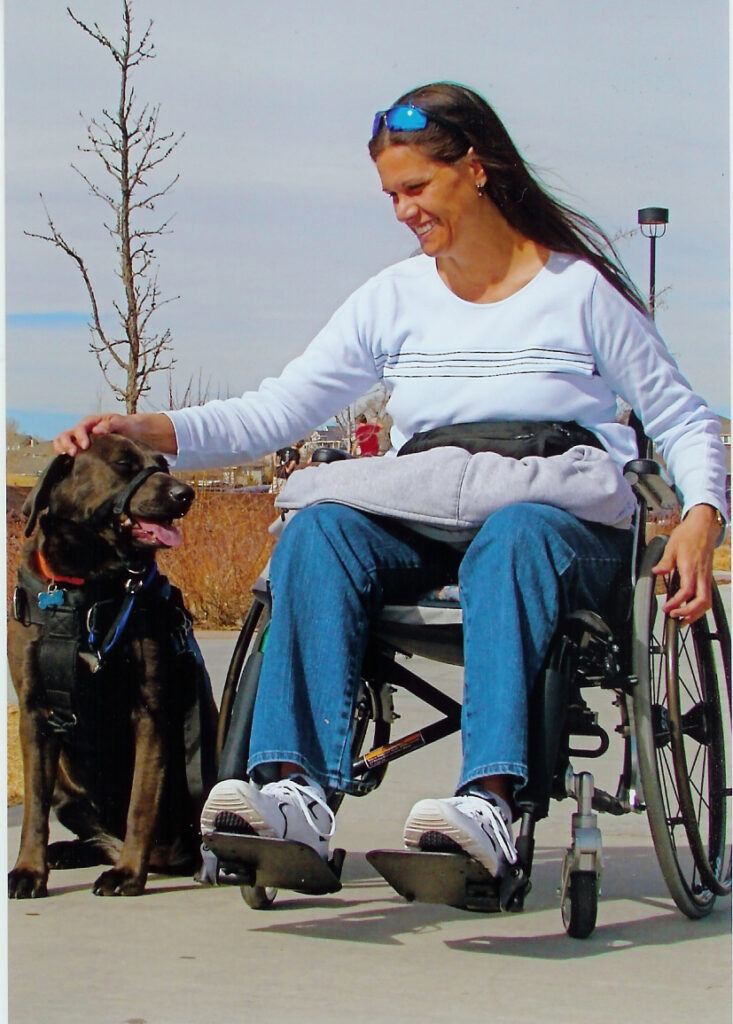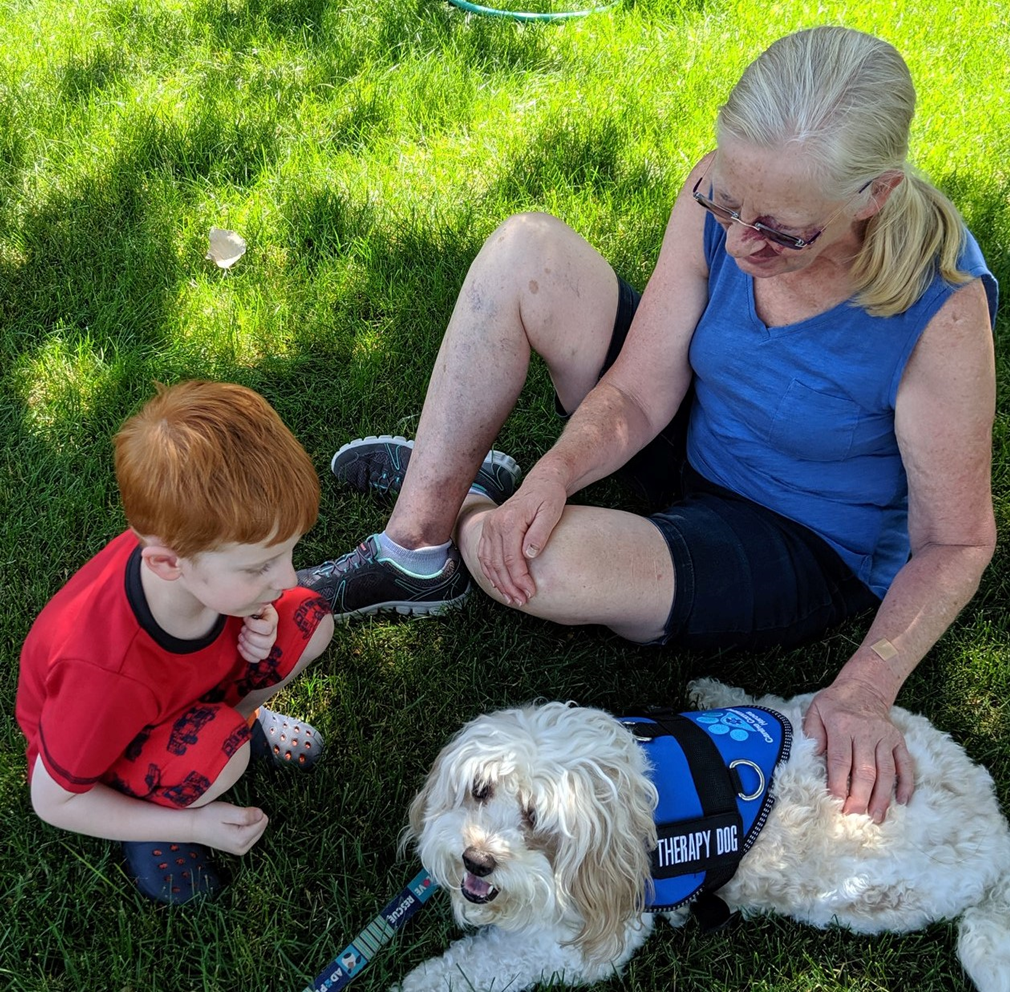What’s the difference?

Service Dog
A dog that is specially trained to perform tasks (jobs) to mitigate the disability of a specific individual.
- To assist or respond to symptoms that interfere with activities of daily life
- To improve independence and access into the community
- Permitted to accompany handler in public areas such as restaurants, stores, public transportation and hotels

Therapy Dog
A dog that is trained to safely interact with individuals and/or groups of people at the direction of their handler.
- To participate in interactions with people that has a positive emotional effect on them
- To engage in goal-oriented therapy, education, and activities that are beneficial to people
- Permitted in places where specific therapy dog programs are implemented such as schools and hospitals

Emotional Support Dog
A pet dog that lives with a person with a disability to improve their mental health. Emotional support dogs do not work in public areas and are not required to have any training according to U.S. law.
- To provide comfort and companionship in the home
- To alleviate symptoms of loneliness, isolation, and stress
- Permitted in “no pet” housing upon the recommendation of the person’s health professional
